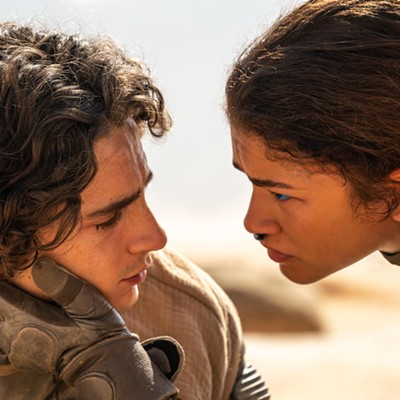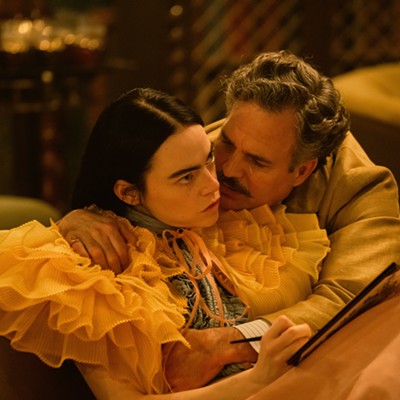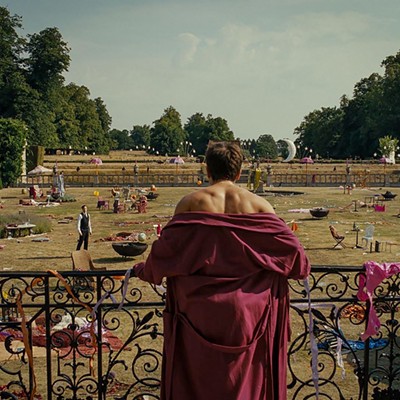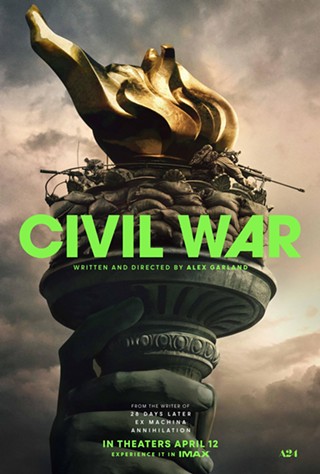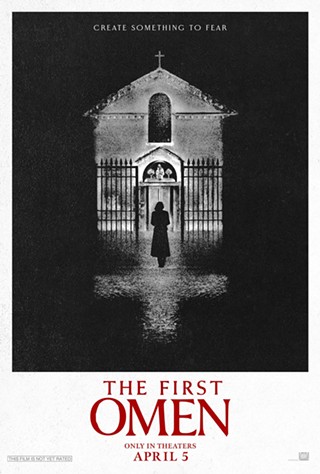Art critic Lucy Lippard's Lure of the Local beckons us to muse about where we live, where we want to go and how to make and appreciate art that speaks to multiple ideas of landscape, the nomad's urge to travel and the creative producer's challenge of narrative. For many media artists like us, explorations of place figure prominently in our work. And for countless Tucsonans--living here for a day or a decade--the lure of the local landscape is one that hums along with The Clash's famed bass-laden question: "Should I stay or should I go now?"
Lippard inquires about this as well, but a bit more eloquently: "As a nomad with a serially monogamous passion for place, I wonder if this inconsistency constitutes hopeless fragmentation or hopeful integration."
Armed with Lippard's query, Jorritsma has collected 11 films that experiment with the relationship of humans to place, but also grapple with the malleability of narrative structure. Perhaps most appropriately, she's packed up the filmic lab work for a mini-tour under the catchy title, The Itinerant Cinemascape, trundling through town this weekend.
"I live in San Francisco, work three jobs and go to school full time," says the 25-year-old curator, experimental filmmaker and member of Eats Tapes, a spastic noise techno band.
"I can't afford to leave, so I'm always fantasizing about other places. I created this traveling show so I can tag along with the films, but also the work itself takes me elsewhere."
The Itinerant Cinemascape features experimental landscape portraits, adventurous geographic excavations, low-tech neighborhood dramas, local documentary excursions, heady psycho-geographies, micro-cinemas, self-made adventures and site-specific installations. The films take their cues from D.I.Y. music culture and colonialist film propaganda strategies.
"But everything has its own narrative," quips Jorritsma.
"One-shot films can, of course, make people a little irritated," she says. "You don't watch a six-hour Andy Warhol film and go for any kind of linear story. It's not about the six hours. It's about the experience of sitting in a room in the dark for that long."
She says that she enjoys that kind of experience, but admits she can find narrative in anything.
"I worry about how audiences will react to the films. People need to be as open as possible, not to suspend criticism but to just experience the work. You shouldn't be asking, 'Where's this film leading me?' You don't go into a gallery and ask this about abstract painting. Artworks don't tell a linear story, so why should moving pictures?
"I can't instruct anyone on how to watch these films, but I can recommend that you suspend all associations and expectations. I've established breaks in the show; there's even a film that encourages audience participation. There are hyper and slow films. I'm hoping that the way I put them together will spark something for viewers," she adds.
I admit I was tempted at times to fast-forward the sample tape Jorritsma sent me. In Near Windows, Ken Paul Rosenthal frames and illuminates four years of observations via nearby windows. What's fascinating about Rosenthal's 12-minute film is its complete silence. His description of the work--"a lapsed tapestry of light, unsuspecting neighbors and street drama"--is evocatively voyeuristic, particularly without the manipulation of ambient noise or music.
Other works, like the frenetic, four-minute video, New York Casino by Kyle Henry, marries Las Vegas with Times Square on one busy street corner in one crazy New York minute, making me glad I live someplace very quiet and relatively still.
Jorritsma adds that her teary response to Tony Gault's film, Housesitting, surprised her.
"Maybe it's nostalgia for a place I've never been," she says, "but I loved it when he scoops dog food for the puppy and feeds the chickens in a home that's not his."
Will people be freed by this kind of filmmaking?
"I don't know. Maybe," answers Jorritsma. "I've shown experimental films to kids and the ones under 7 years old are OK with it, but the 11-year-olds get mad. It's that primary process thing. I had one woman respond that she'd gotten the gist of the film in the first minute. But what's that saying about her attention span, about our own viewing needs?"
And, she adds, "I just go elsewhere in my brain and come up with new ideas while I'm watching. What's wrong with that?"
As for why Jorritsma has landed on this theme of place and people's relationship to it--"a tugging and a pulling," as she describes it--she's not quite sure.
"Is it due to political events, because things are changing so rapidly? I don't know. I read recently that looking back in 100 years, the landscape of the western United States will just be viewed as a phase."

